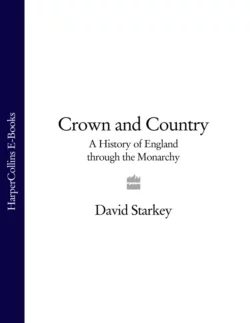Crown and Country: A History of England through the Monarchy

David Starkey
Тип: электронная книга
Жанр: Историческая литература
Язык: на английском языке
Стоимость: 621.48 ₽
Статус: В продаже
Издательство: HarperCollins
Дата публикации: 18.04.2024
Отзывы: Пока нет Добавить отзыв
О книге: From one of our finest historians comes an outstanding exploration of the British monarchy from the retreat of the Romans up until the modern day. This compendium volume of two earlier books is fully revised and updated.The monarchy is one of Britain’s longest surviving institutions – as well as one of its most tumultuous and revered. In this masterful book, David Starkey looks at the monarchy as a whole, charting its history from Roman times, to the Wars of the Roses, the chaos of the Civil War, the fall of Charles I and Cromwell′s emergence as Lord Protector – all the way up until the Victorian era when Britain’s monarchs came face-to-face with modernity.This brilliant collection of biographies of Britain’s kings and queens provides an in-depth examination of what the British monarchy has meant, what it means now and what it will continue to mean. Bringing to life a cast of colourful characters, Starkey’s trademark energy and authority make him the perfect guide on this epic, accessible and compelling journey, as he offers us a vivid portrait of British culture, politics and nationhood through an institution that has defined the realm for nearly two thousand years.